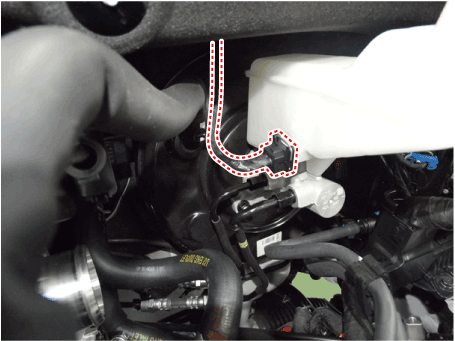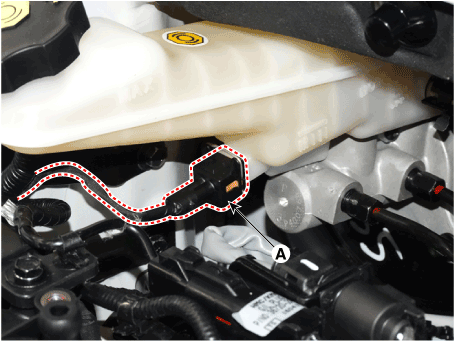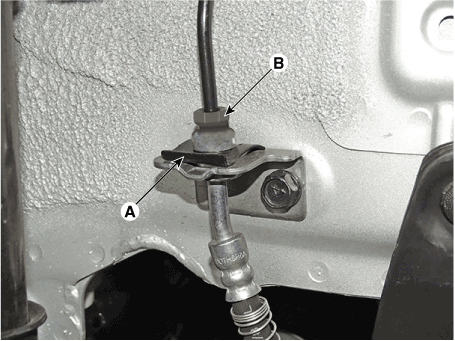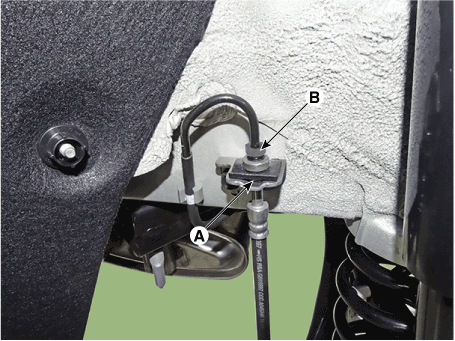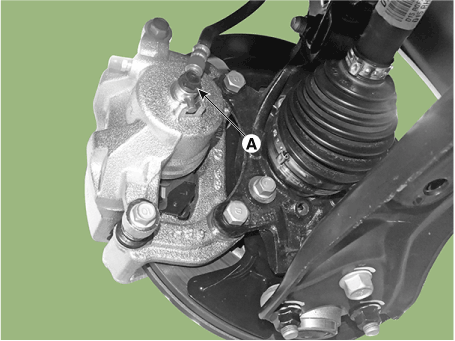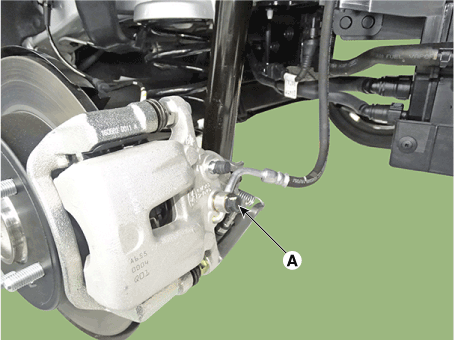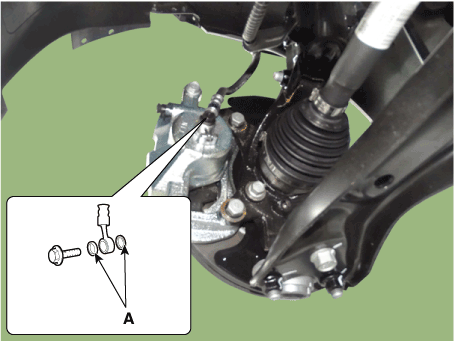Hyundai i-30: Brake System / Brake Line
Components and components location
| Components |

Repair procedures
| Removal |
Brake Tube (Engine Room)
| [LHD] |
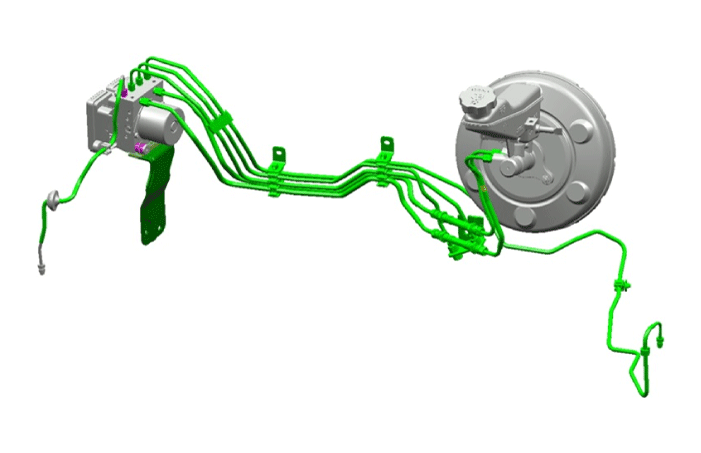
| [RHD] |
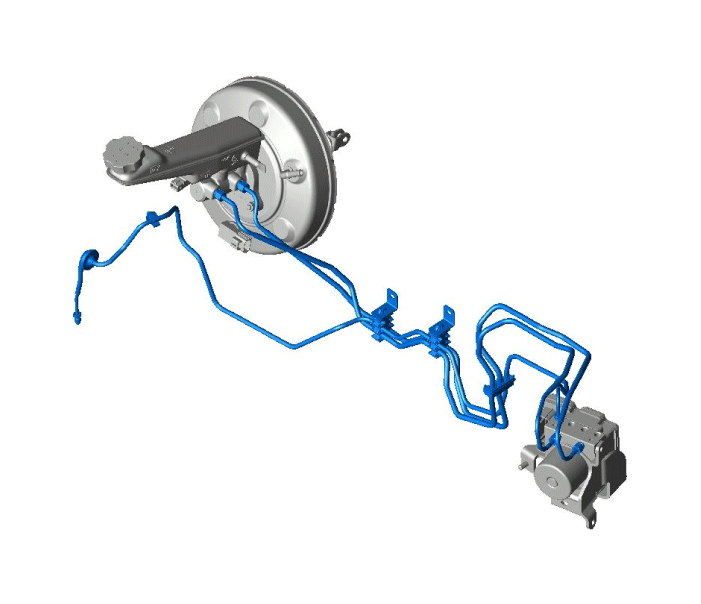
| 1. |
Disconnect the negative (-) battery cable.
|
| 2. |
Disconnect the brake fluid level switch connector.
[LHD]
[RHD]
|
| 3. |
Remove the brake fluid from the master cylinder reservoir with a syringe.
|
| 4. |
Remove the brake tube from the ESP (ABS), master cylinder and brake
tube connector.
|
Brake Hose
| 1. |
Disconnect the negative (-) battery cable.
|
| 2. |
Disconnect the brake fluid level switch connector.
[LHD]
[RHD]
|
| 3. |
Remove the brake fluid from the master cylinder reservior with a syringe.
|
| 4. |
Remove the wheel & tire.
|
| 5. |
Remove the brake hose clip (A).
|
| 6. |
Disconnect the brake tube by loosening the tube flare nut (B).
[Front]
[Rear]
|
| 7. |
Disconnect the brake hose by loosening the bolt (A) & (B).
[Front]
[Rear]
|
| Inspection |
| 1. |
Check the brake tubes for cracks, crimps and corrosion.
|
| 2. |
Check the brake hoses for cracks, damage and fluid leakage.
|
| 3. |
Check the brake tube flare nuts for damage and fluid leakage.
|
| 4. |
Check brake hose mounting bracket for crack or deformation.
|
| Installation |
| 1. |
To install, reverse the removal procedure.
|
| 2. |
After installing, bleed the brake system.
(Refer to Brake System -"Brake System Bleeding")
(Refer to Brake System - "ABS System Bleeding)
(Refer to Brake System - "ESP System Bleeding)
|
| 3. |
Check the spilled brake oil.
|
 Master Cylinder
Master Cylinder
Components and components location
Components
[LHD]
1. Reservoir
cap
2. Reservoir
3. Brake booster
4...
 Brake oil
Brake oil
Specifications
Specification
[LHD]
Brake oil : DOT 3 or DOT 4
Reservoir capacity (cc)
TOTAL
A+B+C+D+E+F
500 ± 20
MAX LEVEL
A+B+C+D+E
475 ± 20
MIN LEVEL
B+C+D+E
200 ± 20
ON LEVEL
C+D+E
170 ± 10
PARTIAL LEVEL
D
Pri : 53 ± 50
D
Sec : 51 ± 5
CLUTCH LEVEL
F
26 ± 5
[RHD]
Reservoir capacity (cc)
TOTAL
A+B+C+D+E+F
456...
Other information:
Hyundai i30 (PD) 2018-2025 Service Manual: Curtain Airbag (CAB) Module
Components and components location Components 1. Curtain Air Bag (CAB) Description and operation Description Curtain airbags are installed inside the headliner (LH and RH) and protect the driver and passenger from danger when side crash occurs...
Hyundai i30 (PD) 2018-2025 Service Manual: MDPS Assembly
Repair procedures Removal 1. Disconnect the battery negative cable from the battery and then wait for at least 30 seconds. 2. Turn the steering wheel so that the front wheels are placed in the straight ahead position...
Categories
- Manuals Home
- 3rd Generation i30 Owners Manual
- 3rd Generation i30 Service Manual
- Scheduled maintenance services
- Auto door lock/unlock features
- To activate the ISG system
- New on site
- Most important about car
Air bag - supplemental restraint system
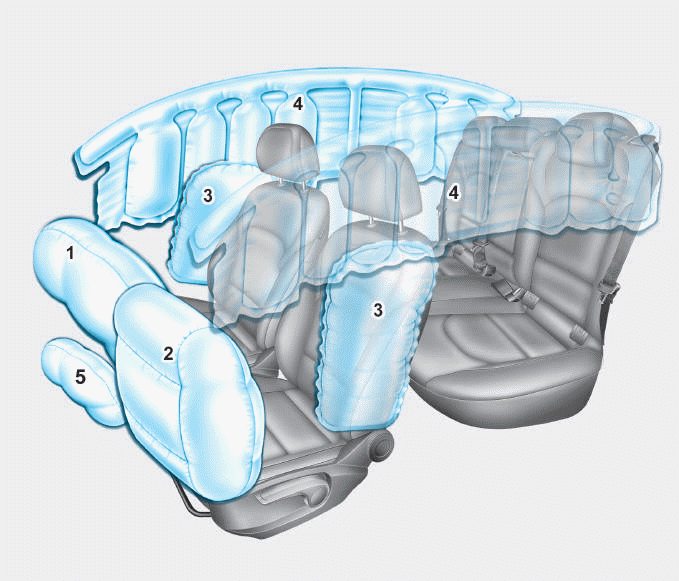
1. Driver’s front air bag
2. Passenger’s front air bag
3. Side air bag*
4. Curtain air bag*
5. Knee air bag*
6. Front passenger air bag ON/OFF
switch
Copyright © 2025 www.hi30.net

